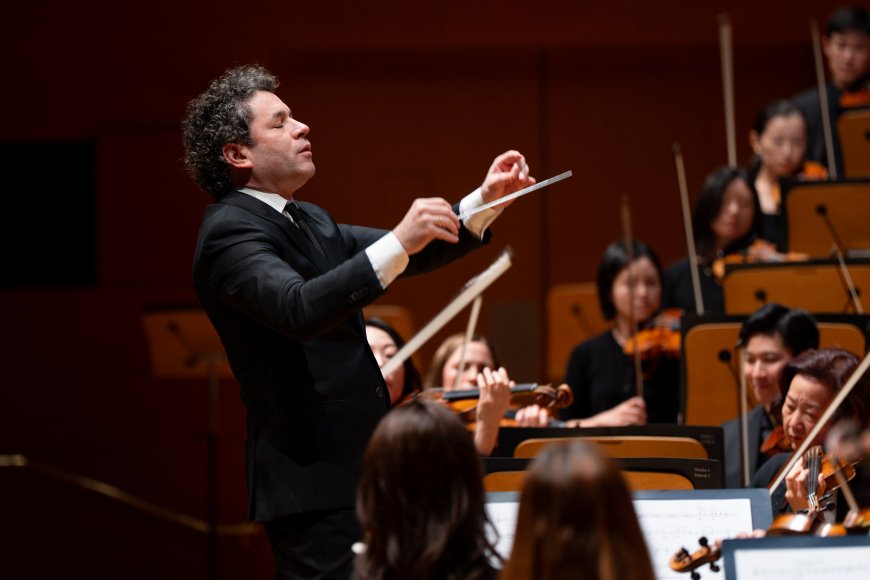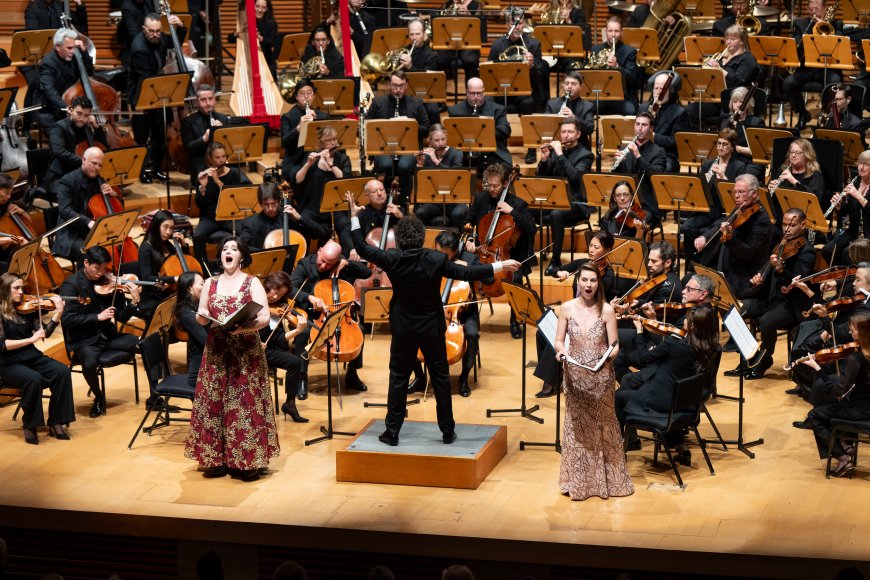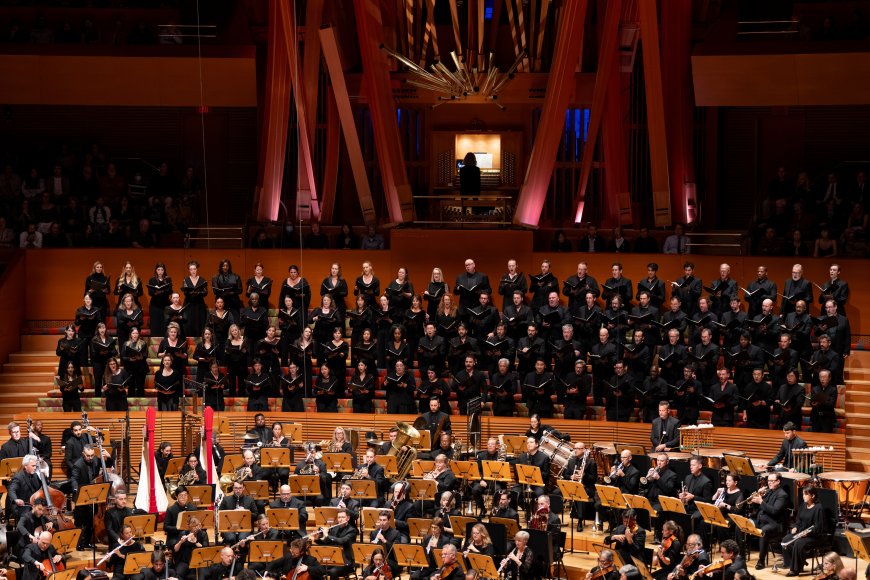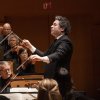
Scored for a cast of hundreds — though they sound like thousands — Gustav Mahler’s colossal Symphony No. 2 demands resources worthy of a Cecil B. DeMille epic. A super-sized orchestra; ten horns and ten trumpets, some used offstage; seven percussion players, with seven timpani, some in the wings; an organ; the “largest possible contingent of all strings”; soprano and alto soloists; a large mixed chorus; and a running time of 80 minutes.
Only the elephants are missing.
Even more, Mahler deploys these musical forces in his Second Symphony to “address nothing less than questions of life, death, and rebirth,” as Los Angeles Philharmonic Music and Artistic director Gustavo Dudamel wrote. Dudamel answered all these questions and more in the vibrant and committed performance he conducted with the LA Phil at Walt Disney Concert Hall on Oct. 9.
Given its cosmic creative and production demands, any performance of Mahler’s Second, which has long been known as the “Resurrection,” is a special occasion. It was only Dudamel’s second time conducting the work with the LA Phil — the first was in 2019 at the Hollywood Bowl. As part of his ongoing final “Gracias Gustavo” season before departing to join the New York Philharmonic, Dudamel chose to program what he calls “one of the most profound musical statements ever written.”
Constructed in five movements of strikingly diverse length and character, the Second is so eclectic and voluminous that it can fall into disconnected episodes without a strong presence on the podium. Conducting without a score, Dudamel maintained the continuity, tension, and suspense throughout, eliciting brilliant solo work from all the sections of the orchestra. He melded the ensemble into a pulsating, breathing organism.

Mahler wrote that he had filled the Second Symphony with “the inner aspect of my whole life,” and with the “blood of everything I have experienced and endured.” One felt Dudamel was drawing on his own personal journey in the performance, rediscovering the musical and philosophical meaning of every bar and every phrase. He participated as a fellow actor in the symphony’s narrative, leading from the darkness of death into luminous resurrection. At times he jumped up and down for encouragement — and out of joy.
The cellos and basses dug into the funeral march of the Allegro maestoso with gusto, setting the stage for the intensity to come. Dudamel negotiated the rapidly changing moods with masterful control and balance, from stern anger to sweet lyricism.
Led by section principals Boris Allakhverdyan (clarinet), Denis Bouriakov (flute), and Ryan Roberts (oboe), the woodwinds played with pure and plangent expression that conveyed the nostalgic wistfulness of Mahler's vision. Mahler instructed conductors “not to drag” the tempo, and Dudamel followed that advice.
The second movement introduces an elegantly rustic Austrian folk minuet that provides emotional relief from the stormy opening. Dudamel danced along with the orchestra, coaxing a light and breezy sound with occasional returns to the shadow of death. The cellos made the most of the gently sighing second theme.

Ironic and irresistible, the insinuating tune that dominates the third movement comes from a song in Des Knaben Wunderhorn, “Des Antonius von Padua Fischpredigt” (St. Anthony of Padua’s Sermon to the Fish). Joking and cynical, it hints at the hollowness of fake happiness without spiritual foundation. Dudamel brought out the swagger, elasticity, and humor in the piece.
Mahler launches from Earth to heaven in the fourth movement, “Urlicht” (Primal Light), based on a meditative song from Des Knaben Wunderhorn. Scottish mezzo-soprano Beth Taylor made an impressive LA Phil debut with the first four notes on the words “O little red rose,” and she sustained a glowing and soulful tone throughout the piece’s plea for eternal life.
One of the most dazzling symphonic creations ever written, the long finale grows and swells like an ocean (or oceans) of sound. Dudamel and his band negotiated the many shifts in mood, tempo, and articulation with aplomb and confidence. The brass choirs on and offstage, stationed all around the hall, acquitted themselves brilliantly, engaging in an echoing dialogue of celestial fanfares.

With their stirring entrance, “Arise, yes, you will arise from the dead,” the disciplined voices of the Los Angeles Master Chorale radiated redemption and hope. Israeli soprano Chen Reiss joined Taylor in a serene duet set to Mahler’s own words: “Prepare yourself to live!” Each of the assembled voices — orchestra, chorus, soloists, percussion battery, and organ — remained distinct but merged into what Mahler desired: “the greatest unfolding of power.”
The end seemed to come too soon, leaving the cheering audience hungry for more. With this intimate and healing performance, Dudamel left his fire-weary Los Angeles community a reassuring parting gift.




